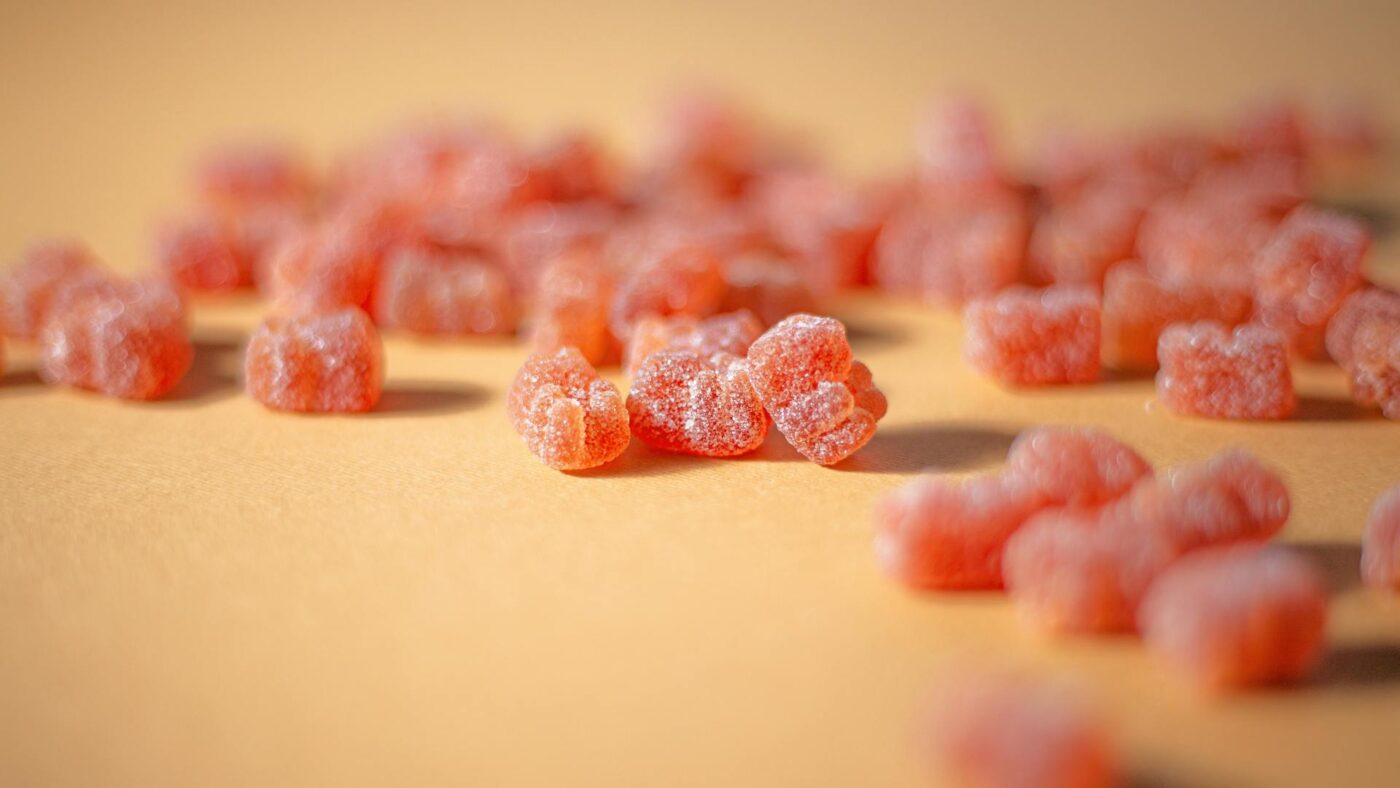Does Consuming Cannabis Edible Give a Healthier Punch Than Other Methods?
Most people are familiar with smoking cannabis, but there are multiple ways to enjoy its effects. While flower remains the most popular product, edibles have quickly gained popularity. Edibles are an appealing alternative for consumers who prefer not to smoke.
The global Cannabis Edibles Market was valued at $8.01 billion in 2022 and may grow at a remarkable CAGR of 16.5% from 2023 to 2032. As the demand for convenient cannabis consumption grows, more and more consumers are purchasing edibles online.
Key Takeaways:
- The cannabis plant needs to undergo decarboxylation before infusing into edibles to convert THCA and CBDA to their active forms – THC and CBD.
- 11-OH-THC, a metabolite of THC, is renowned for its potent psychoactive effects and soothing sensation.
- Other components, like carrier oils, can affect the onset and duration of cannabis edibles.
Cannabis Edibles Online
A cannabis edible is a food, beverage, candy, tablet, or other product that contains cannabinoids from hemp plants or cannabis plants. THC, the non-psychoactive compound found in marijuana, is the most prevalent cannabinoid in edibles, but there are also CBD edibles as well as full-spectrum edibles.
Types of Weed Edibles
| Types of Weed Edibles | Examples |
| Baked Goods | Brownies, Cookies, Cakes and Muffins |
| Candies | Gummies, Hard Candies, Chocolates |
| Beverages | Teas and Coffees, Sodas and Juices, Alcoholic Beverages |
| Tinctures and Oils | Tinctures, Infused Oils |
| Capsules and Pills | Capsules |
How Do Manufacturers Infuse Cannabis Compounds Into Edibles?
Manufacturers infuse cannabis into edibles through several key steps. First, they perform decarboxylation, where they apply heat to convert the inactive CBDA and THCA in the cannabis plant into active CBD and THC.
Next, they extract the active cannabinoids from the decarboxylated material using solvents like ethanol or CO2, which creates a concentrated cannabis oil or distillate. If they don’t use distillates or oils, they infuse cannabis into a carrier oil, butter, or another fat-based medium, such as coconut oil, olive oil, or clarified butter.
After infusing the cannabis, they precisely dose the infused oil or distillate to ensure consistent and predictable potency. They then incorporate this dosed infusion into various edibles, like baked goods, gummies, chocolates, and beverages.
In the formulation stage, they blend the cannabis extract with other ingredients, such as flavors, terpenes, or minor cannabinoids, to enhance the effects and create a pleasant aroma and flavor. This detailed process ensures that each edible delivers a consistent and enjoyable consumer experience.
What Happens to Your Body When You Consume Edibles?
Two edibles with the same amount of THC can have very different effects. One might be mild, while the other can be strong and long-lasting. Cannabinoids from edibles take longer to enter the bloodstream. Effects commonly peak 2-3 hours after consumption and can last 6-20 hours. The type of food, like a brownie or a beverage, also affects the timing and potency of the effects.
How It Works
THC from edibles enters your digestive system and travels directly to your liver, where it undergoes a process called “first-pass metabolism.” During this phase, liver enzymes such as CYP2C9 and CYP3A4, part of the cytochrome P450 group, become active.
First-pass metabolism adds oxygen and hydrogen to cannabinoids, which changes their structure. For THC, this process creates 11-OH-THC, a metabolite with strong psychoactive effects. This is why edibles produce a more intense and longer-lasting high than smoking THC.
After metabolism, the body distributes cannabinoids through the bloodstream. They interact with cannabinoid receptors in the nervous system, brain, and other organs, causing various physical and mental effects.
Ingredients of Weed Edibles Affect the Onset and Duration
Using sunflower instead of coconut oil in pot brownies could increase the onset and intensity of effects.
A 2020 study in rats investigated the delivery of cannabinoids using different oil-based formulations. The study found that globules made from cocoa butter (long-chain molecules, primarily saturated) allow the digestive system to absorb them faster than those made with tricaprin, a medium-chain fat.
The same study also compared drug delivery using long-chain, mostly unsaturated sesame oil and a medium-chain oil derived from saturated coconut and palm kernel. According to the researchers’ report in the International Journal of Pharmaceutics, both formulations performed similarly.
Health Benefits of Cannabis Edibles
Anxiety Relief
Researchers from Boston collected data from 775 HIV/AIDS patients suffering from six common symptoms: anxiety, depression, fatigue, diarrhea, nausea, and peripheral neuropathy. The study included participants from Kenya, South Africa, Puerto Rico, and ten U.S. locations. The results indicated that cannabis was somewhat more effective than standard prescription and over-the-counter medications.
Chronic Neuropathic Pain
Two recent publications have confirmed the health benefits of cannabinoid use, which analyzes data from twenty-nine randomized studies included in separate systematic reviews. The findings indicate that cannabinoids are safe, modestly effective, and a viable option for treating chronic neuropathic pain.
Sleep Stimulant
Early studies revealed that cannabis had a mixed impact on sleep. It seemed to act as a sedative in some ways but also reduced deep sleep. The Farnborough study shed light on this issue by revealing an apparent self-balancing mechanism between CBD and THC. The study found that dose-dependent THC has sedative effects, while dose-dependent CBD has alerting properties.
Less Exposure to Smoke
Consuming cannabis through edibles offers an alternative to inhaling smoke or vapor, which can irritate the lungs with frequent use. Unlike smoking or vaping, which affects certain organs, edibles don’t pose risks to the liver. They may even provide benefits for certain liver conditions characterized by inflammation.
Longer Effects
Smoking or other consumption methods offer a rapid onset but at the cost of a shorter duration. If you aim to alleviate pain or achieve a restful night’s sleep, edibles, known for their extended duration, can offer sustained relief over time.
Edibles vs. Other Consumption Methods
Smoking Cannabis
Smoking is a popular method that involves the use of a joint, pipe, blunt, or bong. One of the benefits of smoking weed is that it can produce immediate onset of effects, with users feeling the psychoactive impacts within 2 to 10 minutes.
Vaporizing Cannabis
Vaporization is another inhalation method using devices such as vaporizers, vaping pens, or dab rigs. Vaping reduces respiratory irritation compared to smoking, and its onset and duration are similar.
Sublingual Consumption
Sublingual consumption involves ingesting products like tinctures. This method allows THC product absorption through the tissues under the tongue, with precise dosing as one of its benefits. It also has a faster onset than edibles.
Topical
The cannabinoids in topical formulations, such as creams, lotions, salves, or balms, are absorbed through the dermal layers of the skin. This allows the active compounds to directly target areas of localized discomfort or inflammation without systemic distribution throughout the body.
Proper Dosage Guidelines for Weed Edibles
| THC Content per Dose | Dosage Category | What to Expect |
| 1 – 2.5 mg | Microdose | No intoxication pain alleviation with cognitive effects. |
| 3 – 5 mg | Low dose | With a degree of psychoactive effects, 5mg produces high to new consumers. |
| 10 – 15 mg | Moderate | The ideal dose is for experienced users and may cause intense high or adverse effects to new users. |
| 20 – 30 mg | Acute | Strong, so exercise caution. Only recommended for experienced edible consumers. |
| 50 – 100 mg | Macrodose | Effective for medical conditions, not for those with mental health issues. |
Buy THC Edibles Online
| Product | THC/CBD Content |
| Trolli Very Berry | 600mg/0mg |
| Trrlli Peach Rings | 600mg/0mg |
| Smoakland Hard Rockz Lozenge – Blue Razberry | 10mg/<2mg |
A Tastier, Healthier Way to Enjoy THC Gummies & More
Weed edibles are an excellent choice for most consumers seeking alternative methods of cannabis consumption. Edibles offer a potentially healthier option compared to traditional smoking or vaporizing.
When buying THC edibles online, like at GetLoud Cannabis dispensary, always check the ingredients. Edibles with carrier oils can take effect faster. Overall, cannabis edibles last longer, which helps with chronic pain, anxiety, or insomnia.
Frequently Asked Questions
How much do THC edibles tend to cost in the US?
The cost of THC edibles in the US varies depending on potency, brand, and location. Commonly, prices range from:
- Low-dose edibles (5-10 mg THC per serving): $10-$20 per package
- Medium-dose edibles (10-20 mg THC per serving): $20-$40 per package
- High-dose edibles (20+ mg THC per serving): $40-$60 or more per package
Prices can be higher for premium brands or products with additional features, like organic ingredients or special formulations.
Is 50 mg of edibles strong?
The impact of THC can show up even with doses as low as 2.5 mg for some people. Others might need as much as 50 mg to feel any noticeable effects. Given this broad spectrum, begin with a low dose and then gradually raise it, as reactions to THC-infused edibles can differ significantly.
When you buy edibles online, pay attention to the chemical structure of the THC products as this can influence their pain relief potential and delicious aroma.
Does THC edible have the same effect if you have a liver problem?
Liver conditions or medications that affect liver function can alter the metabolism of cannabis edibles. The liver enzymes CYP2C9 and CYP3A4 primarily metabolize THC. Studies have demonstrated that patients who metabolize CYP2C9 poorly exhibit THC concentrations approximately three times higher than those of extensive CYP2C9 metabolizers.


